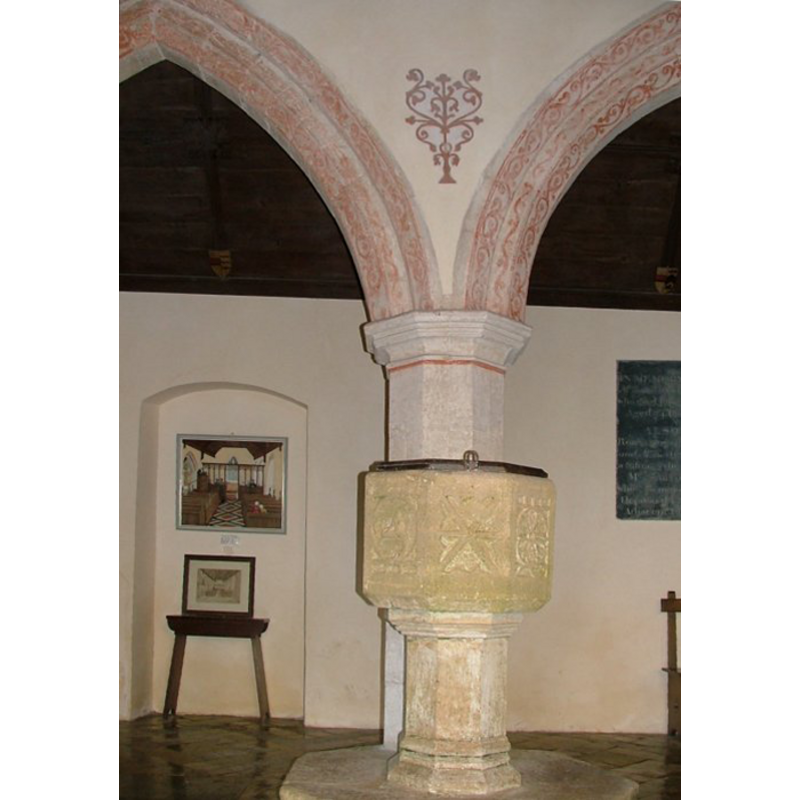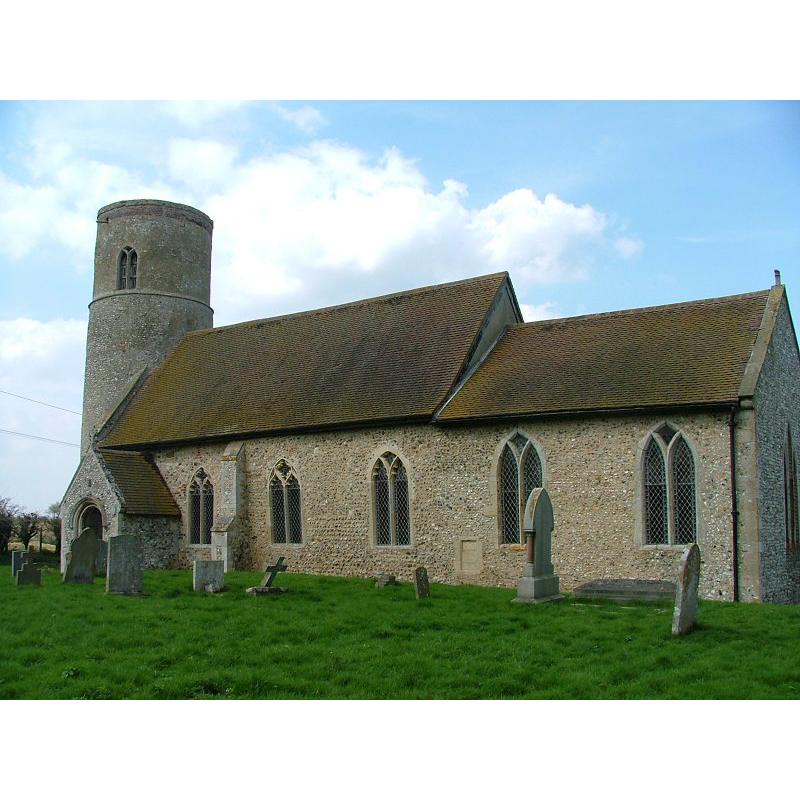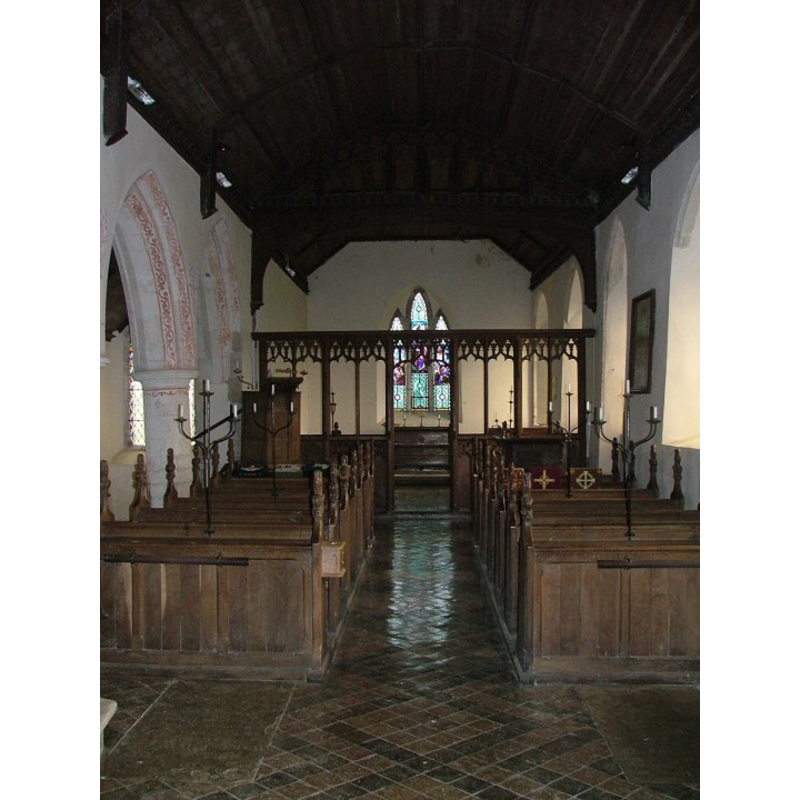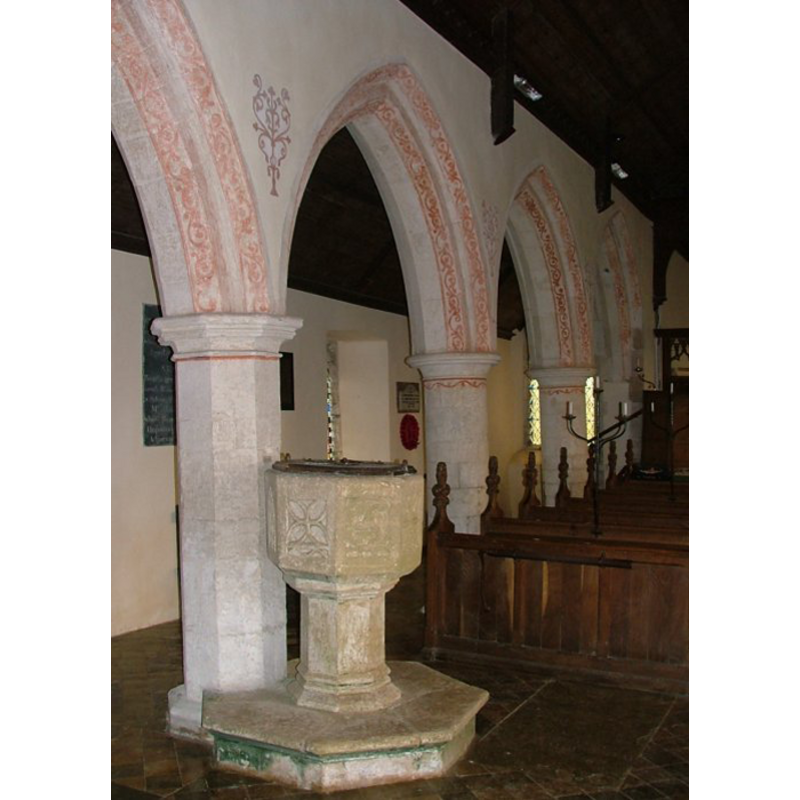Threxton / Trectuna / Trekestone / Trestunam

Image copyright © Simon Knott, 2004
Standing permission
Results: 6 records
design element - motifs - moulding
design element - motifs - moulding - graded
design element - patterns - tracery
view of church exterior - southeast view
view of church interior - nave - looking east
INFORMATION
FontID: 15216THR
Object Type: Baptismal Font1
Church/Chapel: Parish Church of All Saints
Church Patron Saints: All Saints
Church Location: Threxton, Little Cressingham, Norfolk IP25 6LU, United Kingdom
Country Name: England
Location: Norfolk, East Anglia
Directions to Site: Located just E of Little Cressingham, 4 km W of Watton
Ecclesiastic Region: Diocese of Norwich
Historical Region: Hundred of Wayland [in Domesday]
Font Location in Church: Inside the church
Century and Period: 14th century, Decorated
Credit and Acknowledgements: We are grateful to Simon Knott, of www.norfolkchurches.co.uk, for his photographs of this church and font
Church Notes: round-tower church
Font Notes:
Click to view
There are two entries for Threxton [variant spellings] in the Domesday survey [https://opendomesday.org/place/TF8800/threxton/] [accessed 18 February 2024], neither of which mention a priest or church in it. Armstrong (1781) writes: "T[hrexton] sometimes wrote Trekestone, and in Doomsday book Trestunam and Trectuna. The church was valued at nine marks, besides the portion, and paid 5s. procurations, 20d. synodals, and 9d. Peter-pence. [...] The church consists of one aile only, which is tiled; the chancel is thatched, and the fteeple is low and round. [...] Simon Senz Aveyr gave to the church of the Holy Trinity of Norwich a third part of his tithes of Threxton". Blomefield (1805-1810) cites Armstrong almost verbatim, as usual in many of his entries, and names "Ralf de Harpele" as first recorded rector, in 1205. A font in this church is described in Pevsner & Wilson (1999): "Octagonal, with blank window tracery motifs, pointing to a pre-Perp[endicular] date. One reticulated, one three-light intersecting design." Noted and illustrated in Knott (2004). The underbowl has graded moulding; the octagonal stem is plain and the lower base is moulded and octagonal; on an octagonal plinth. The wooden cover is octagonal and flat.
COORDINATES
Church Latitude & Longitude Decimal: 52.5663, 0.7796
Church Latitude & Longitude DMS: 52° 33′ 58.68″ N, 0° 46′ 46.56″ E
UTM: 31U 349509 5826343
MEDIUM AND MEASUREMENTS
Material: stone
Font Shape: octagonal (mounted)
Basin Interior Shape: round
Basin Exterior Shape: octagonal
LID INFORMATION
Material: wood
Apparatus: no
Notes: [cf. FontNotes]
REFERENCES
Armstrong, Mostyn John, History and antiquities of the County of Norfolk [...] containing [...], Norwich: printed by J. Crouse, for M. Booth, Bookseller, 1781
Blomefield, Francis, An essay towards a topographical history of Norfolk, 1805-1810
Knott, Simon, The Norfolk Churches Site, Simon Knott, 2004. [standing permission to reproduce images received from Simon (February 2005]. Accessed: 2009-09-01 00:00:00. URL: www.norfolkchurches.co.uk.
Pevsner, Nikolaus, Norfolk 2: North-West and South (2nd ed.), London: Penguin, 1999


